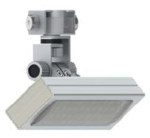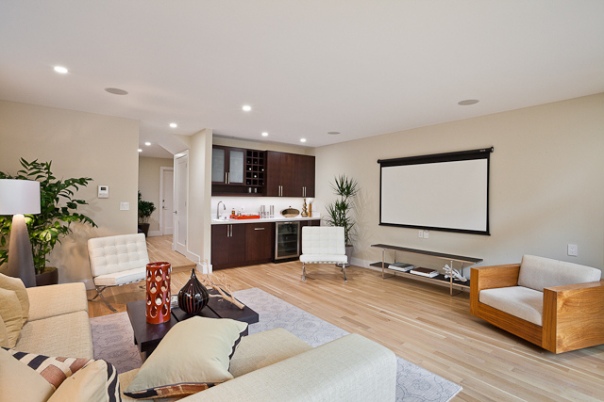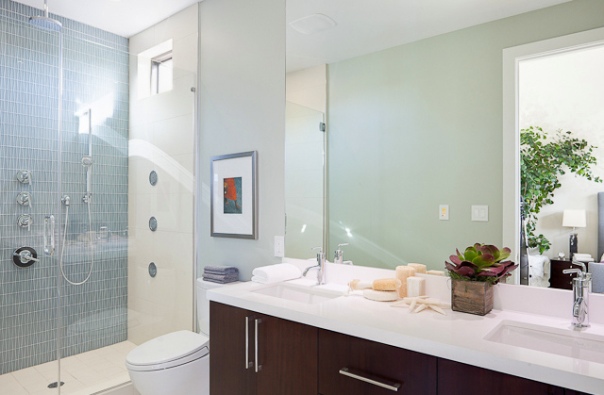Category Archives: LED News
Meanwell’s New Power Supplies for LED Lighting
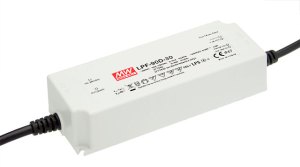 Here we are again, giving you another dose of LED lighting news. This week, Meanwell, a power solution provider, has enhanced the power of their LED power supply products to 90 W with the introduction of the LPF-90(D) series. This series is ideal for various LED applications, such as outdoor/indoor LED lighting, commercial lighting, wash-wall lighting, LED stage and theatre lighting, and LED decorative lighting.
Here we are again, giving you another dose of LED lighting news. This week, Meanwell, a power solution provider, has enhanced the power of their LED power supply products to 90 W with the introduction of the LPF-90(D) series. This series is ideal for various LED applications, such as outdoor/indoor LED lighting, commercial lighting, wash-wall lighting, LED stage and theatre lighting, and LED decorative lighting.
The LPF-90 series is equipped with built-in active power factor correction and a host of useful functions. With additional, three-in-one dimming features, the LPF-90D series trumps the competition by having a 1 to 10 V d.c. PWM signal or variable resistance to provide amazing brightness reduction and significant energy savings.
Additional features of the power supply series include an important IP67 protection. The supplies are covered in a durable plastic case with 94V-0 fire prevention level. Even the supply’s internal shock absorption is high: they can last through 5 G vibrations. With up to a 91% efficiency rate, the new power supplies can also withstand -40°C and +70°C temperatures, making it safe for all types of weather.
Moreover, the products are contained in double isolated, cable-style input/output connections, which makes it highly safe for regular use. The LPF-90D features extra wires to provide the perfect dimming controls.
Questions or comments about this product? Share them below! We are glad to hear from you!
New Hyper-Efficient Bulb May Be Too Costly
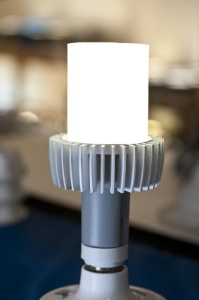 Cree has recently released their new hyper-efficient bulb in the stores and while, we’re super excited about a new LED light out in the market, it may be too expensive for consumers to buy.
Cree has recently released their new hyper-efficient bulb in the stores and while, we’re super excited about a new LED light out in the market, it may be too expensive for consumers to buy.
But, wait, let’s talk about why it could be worth the extra dollars. The Cree bulb only uses one-tenth of the electricity a 75-watt incandescent bulb absorbs. Additionally, the bulb produces 152 lumens per watt versus incandescents, which only produce 14.6 lumens per watt (‘lumen’ is a measurement of the visible light emitted by a bulb). In total, the Cree bulb produces a whopping 1,300 lumens, certainly exceeding the innovation goals of the U.S. Department’s L Prize Competition.
With these great statistics, the Cree bulb can actually reduce energy usage in the United States by 16.5 percent, as the company claims. However, this claim may be difficult to prove considering the bulbs are a bit too costly for the consumer market. On average, LED lighting costs $18 per kilolumen produced, while incandescent bulbs were around $2.20 per kilolumen. LEDs are expected to lower in price, but this may not happen until a few years later, when demand for LEDs will increase since the Energy Act of 2007 will eliminate incandescent light bulbs from the market.
So, for LED manufacturers, there will surely be a bright light at the end of the tunnel.
Excited about Cree’s hyper-efficient bulb? Share your thoughts below.
New Bulb on the Block
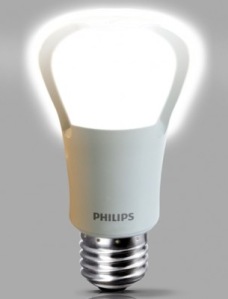 A new LED bulb is now available for sale online! Royal Philips Electronics has just released a 17-watt LED bulb that equals to a 75-watt-equivalent incandescent bulb. The innovative bulb uses a whopping 80% less electricity than incandescents and lasts 24 times longer. In fact, the bulb has a lifespan of 25,000 hours.
A new LED bulb is now available for sale online! Royal Philips Electronics has just released a 17-watt LED bulb that equals to a 75-watt-equivalent incandescent bulb. The innovative bulb uses a whopping 80% less electricity than incandescents and lasts 24 times longer. In fact, the bulb has a lifespan of 25,000 hours.
Want it now? Well, the 17-watt LED bulb is exclusively available for $39.97 on HomeDepot.com. If you want a cheaper alternative, Phillips also already sells a 60-watt equivalent LED that is currently priced at $20.
As the U.S. approaches the 2014 deadline banning the sale of incandescent light bulbs, many consumers are getting more and more interested in LED lighting. Cost-effective and energy-saving, LEDs promise better deals in the long run since they last for several years, some as long as 17 years.
What do you think of this hot new product? Will you go out and get these bulbs yourself or think they are too expensive? Share your comments below.
PRIMA LIGHTING’S 14th ANNIVERSARY CATALOG RELEASED!
Highlights include NEW Mini-LED Wall Washer
NEW Super Thin LED Recessed / Puck Light
The wait is finally over! PRIMA Lighting’s 14th Anniversary Catalog is now available!
This completely re-designed catalog includes multiple installation photos from our recent and past projects. Fine quality images and high definition 3D rendering present you the best of each fixture. It also features our new System Compatibility Indicators, distinctive icons that will help you identify the various elements of each fixture:
 Our new catalog focuses on our latest products and innovations. You’ll be excited to know a wide variety of new extensions from our current product families have recently joined the line-up: new Italian glass, LED Recessed Lighting, bendable line voltage track… everything was uniquely designed and built to the “PRIMA” standard.
Our new catalog focuses on our latest products and innovations. You’ll be excited to know a wide variety of new extensions from our current product families have recently joined the line-up: new Italian glass, LED Recessed Lighting, bendable line voltage track… everything was uniquely designed and built to the “PRIMA” standard.
Mini-LED Wall Washer
The combination of ultra-low consumption and high-output LED modular units are now available on PRIMA’s Mini-LED Wall Washer. This amazing product is ideal for PRIMA’s Minirail track system, a sleek and low-profile track system perfect under kitchen cabinets, bookshelves, and jewelry display cases.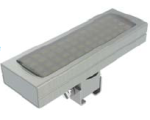
The Mini-LED Wall Washer is available in both adjustable and fixed styles. They come in 24 or 48 LED, fully dimmable when combined with PRIMA dimmable transformer and low-voltage magnetic dimmer.
Super Thin LED Recessed / Puck Light
 1.46-inch diameter, 0.63-inch thickness, the new SUPER THIN LED Recessed/Puck Lighting highlights the best of PRIMA’s amazing collection of LED fixtures. Fits under most cabinet fixtures, this versatile lighting system is offered in both recessed and puck styles. With only 1.2W of power consumption, it is truly a brilliant innovation!
1.46-inch diameter, 0.63-inch thickness, the new SUPER THIN LED Recessed/Puck Lighting highlights the best of PRIMA’s amazing collection of LED fixtures. Fits under most cabinet fixtures, this versatile lighting system is offered in both recessed and puck styles. With only 1.2W of power consumption, it is truly a brilliant innovation!
VantagePoint Predicts LED Lighting Prices Will ‘Plummet’ By 2015
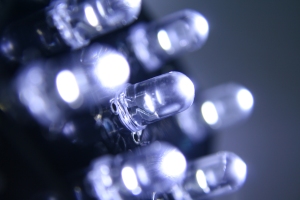 As more and more demand for green technology rises and the number of competitors increase, VantagePoint Capital Partners, investors in Silicon Valley, expect the price of LEDs to drop by 2015. In fact, VantagePoint’s CEO, Alan Salzman, predicts that prices may fall 90% within three years.
As more and more demand for green technology rises and the number of competitors increase, VantagePoint Capital Partners, investors in Silicon Valley, expect the price of LEDs to drop by 2015. In fact, VantagePoint’s CEO, Alan Salzman, predicts that prices may fall 90% within three years.
Since the incandescent light bulbs are being phased out, it leaves much room for LEDs to gain hold of the 40 billion dollar global lighting market. Today, Europe has begun phasing out incandescent bulbs and with the recent energy efficiency policy in the U.S., 100-watt bulbs will soon be obsolete in 2012.
However, since the phasing out has just begun in our part of the globe, there hasn’t been much LEDs on the shelves for sale yet. But, Salzman expects that once incandescents are eliminated, more and more startups will develop low-cost LEDs for the general public.
Eager to improve the environment and take a piece of the growing green industry, VantagePoint has invested approximately $750 million in 32 clean technology companies, which include top LED manufacturers.
Wondering why LEDs are so important to the environment? Well, basically, an average LED bulb will save U.S. consumers as much as $7 a year in energy costs compared with incandescent bulbs, and they’ll last for about 30 years, according to Salzman.
For more info, contact us at 1-562-407-3079 or visit http://www.primalighting.com.
Decorating Your Home with LED Lighting
So, you’re thinking about decorating your home, or at least playing with the idea? Well, while many may think decorating only involves furniture, framed art, and painting, it may be surprising to know that lighting significantly contributes to the overall style of a home.
Okay. Now that we have established that lighting is important, where to start? Today, there are a variety of lighting types in the market, making it difficult to choose the right kind of lighting for you. One idea to remember is maintaining a good balance between great ambiance and bright illumination. The best type of lighting that achieves this is the LED light. LED lighting provides pleasant brightness, suitable for areas where high illumination is needed, such as the kitchen and the bathroom. Yet, it keeps a cool system, producing little heat, which is good both for the environment and the wallet.
Moreover, LED is ideal for areas outside the home, such as patios. LEDs are durable and some LED lighting fixtures are even weatherproof.
However, many home owners are finding switching to LEDs a bit challenging since LED bulbs are still on the expensive side. But, if you think about LED’s long energy life, which averages to 25,000+ hours (or three years), it’s actually a better deal going with LED as opposed to incandescent light bulbs. Plus, like we said, LEDs are more durable, so you don’t have to worry much about it being as fragile.
In fact, because of these extraordinary qualities, some decorators are considering switching over to LEDs. They find LED light bulbs provide great ambiance, perfect illumination, durability and maintains this look for years.
Do you have trouble finding lighting fixtures? Shop online at PrimaLighting.com. We provide a wide variety of lighting fixtures for every space.
Embracing the Bulb Changeover
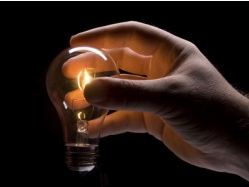 The news of extinguishing incandescent light bulbs have really disappointed many consumers, some of which are interior designers, who depend on the right lighting to produce their masterpieces. Wary of the bulb changeover, these designers are desperately hoarding incandescents before these bulbs are completely obsolete due to the congressional legislation.
The news of extinguishing incandescent light bulbs have really disappointed many consumers, some of which are interior designers, who depend on the right lighting to produce their masterpieces. Wary of the bulb changeover, these designers are desperately hoarding incandescents before these bulbs are completely obsolete due to the congressional legislation.
However, there are some decorators who are not entirely dismayed at the idea of the changeover. Scott Salvator, an interior designer in Manhattan, has embraced LED lighting with excitement as LED promises longer life and durability, unlike incandescents. He believes that LEDs will make decorating easier, since it would maintain its lighting for a longer period of time. Salvator has been using a Philips A19, a dimmable ambient LED bulb with a 25,000-hour life span and a cost of $39.
Still, there are some consumers who dislike the idea of spending so much for lighting, when incandescent light bulbs cost $4-5. But, since LED lighting lasts much longer, incadescent light bulbs actually cost more in the long run.
What do you think? Do you love or hate this changeover?
GE’s New Overhead Light May Replace Fluorescent Lighting
The depressed, stark fluorescent lighting in buildings and offices may soon be replaced by GE’s new Overhead Light, which is not only more energy efficient, but more sophisticated. GE’s latest design may very well replace fluorescent lighting, and with good reason.
Below are some images courtesy of GE.
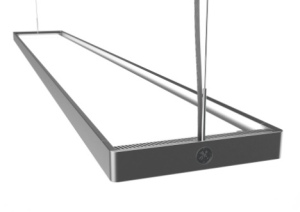 GE’s new line of LED edge lighting fixtures are flexible: they can either be mounted flush with ceiling tiles, or hang from ceilings in more attractive fixtures.
GE’s new line of LED edge lighting fixtures are flexible: they can either be mounted flush with ceiling tiles, or hang from ceilings in more attractive fixtures.
Aside from being more attractive than fluorescent bulbs, GE’s LEDs are also longer lasting: they can last as long as 35,000 hours, or 15,000 hours longer than a fluorescent bulb.
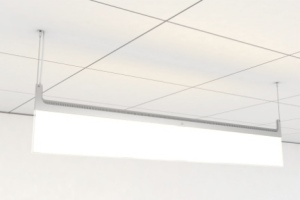 According to GE, the fixtures are built around coin-size LED light sources and a textured optical screen, made by PC memory company Rambus, to disperse light. The effect is to spread light across the full surface of a flat screen. Light can also be focused on specific areas.
According to GE, the fixtures are built around coin-size LED light sources and a textured optical screen, made by PC memory company Rambus, to disperse light. The effect is to spread light across the full surface of a flat screen. Light can also be focused on specific areas.
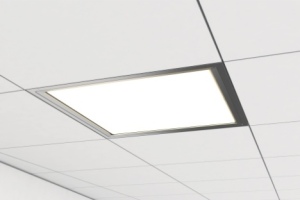 However, as much as this new line of lighting will be more advantageous for consumers, it will also be more expensive. GE hasn’t announced how much they will cost yet, but it is clear that these sleek designs will be priced higher than the drab fluorescent lighting we are used to these days.
However, as much as this new line of lighting will be more advantageous for consumers, it will also be more expensive. GE hasn’t announced how much they will cost yet, but it is clear that these sleek designs will be priced higher than the drab fluorescent lighting we are used to these days.
What do you think about GE’s new lighting fixtures? Like it or hate it?
If you want affordable, stylish lighting solutions, Prima Lighting is your answer. We offer a variety of sophisticated designs that can work for your budget. View our collection at www.primalighting.com.
For more information, contact us at (562) 407-3079 or email info@primalighting.com. You can also become our fan on Facebook and Twitter.
LEDs vs. CFLs
 LED lighting is even more efficient than CFLs. In fact, a single $40 bulb can last up to 23 years. They also light up instantly and contain no mercury or lead. The current selling price of LED light bulbs are $20, but we’re sure to see this price drop soon.
LED lighting is even more efficient than CFLs. In fact, a single $40 bulb can last up to 23 years. They also light up instantly and contain no mercury or lead. The current selling price of LED light bulbs are $20, but we’re sure to see this price drop soon.
One of the first retailers to wipe out incandescents before the Energy Independence and Security Act’s timeline, is IKEA, which pulled the plug on standard light bulbs last month. IKEA made the announcement late Spring that starting August 2010, they will begin phasing out incandescents from their stock.
“IKEA is committed to integrating sustainable practices into our range and business practices. As the largest home furnishings store, we are constantly looking at ways to help support our customers with every day environmentally responsible solutions that will improve their lives. Eliminating incandescents is just one simple way for IKEA customers to reduce energy consumption and greenhouse gases,” stated Mike Ward, US IKEA President.
What do you think of IKEA’s big move? Do you agree or disagree?
For more information on LEDs, talk to us at Prima Lighting. You may contact us @ (562) 407-3079 or visit www.primalighting.com. For more news and updates, become our fan on Facebook or follow us on Twitter.
Say Goodbye to Incandescent Light Bulbs
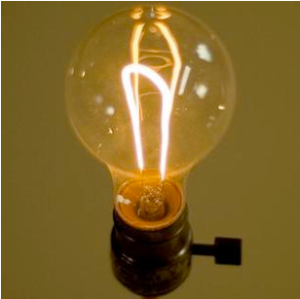 Beginning next year, the government will start phasing out incandescent light bulbs, much to the dismay of users and probably, Thomas Edison. This plan is part of the Energy Independence and Security Act of 2007, which was created “to move the United States toward greater energy independence and security, to increase the production of clean renewable fuels” and “to protect consumers.”
Beginning next year, the government will start phasing out incandescent light bulbs, much to the dismay of users and probably, Thomas Edison. This plan is part of the Energy Independence and Security Act of 2007, which was created “to move the United States toward greater energy independence and security, to increase the production of clean renewable fuels” and “to protect consumers.”
Most people are still unaware of this law that aims to raise efficiency standards for light bulbs. And, old energy-inefficient incandescents just don’t make the cut. Those that are aware of the law are stocking up on as many light bulbs they can for future use. Some are hoping that they can even sell incandescents if they become pricey novelty items later on.
So, what is the timeline to this phase-out? At the beginning of 2012, 100-watt incandescent bulbs will be eliminated. The next year, 75-watt bulbs will follow. And in 2014, it’s so long to the 40-watt bulb.
Currently, the only other alternative in the market that is more efficient and inexpensive are CFLs (Compact Florescent Lamps). One CFL can burn for 7 years, or 8,000 hours, at a total cost of about $25. They last 10 times longer than standard bulbs. To get the equivalent in incandescents, you’ll have to buy eight bulbs and spend $96. So, by using CFLs, you save about $70. CFLs also use about one-fourth the energy as incandescents and produce 90 percent less as well as more light per watt.
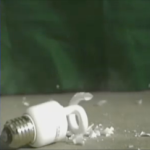 However, a lot of people aren’t fans of CFLs because they need time to warm up, and when you break them, there’s mercury to clean up.
However, a lot of people aren’t fans of CFLs because they need time to warm up, and when you break them, there’s mercury to clean up.
So, what’s next? Well, there’s good news to this phase-out. LEDs (Light-Emitting Diodes) are being researched at companies like Sylvania. LEDs are just now coming on the market for home use, but we predict that the Energy Independence and Security Act will make LEDs more available in the market, thus lowering their prices.
What do you think of this new legislation to wipe out standard light bulbs? Are you ready to say goodbye to incandescents? Share your thoughts and opinions below.
For more information on LED light bulbs and lighting systems, talk to your friendly customer service representatives at Prima Lighting. We carry a wide range of styles and colors that will suit any home or business. Contact us @ (562) 407-3079 or visit www.primalighting.com. You can also become our fan on Facebook or follow us on Twitter.
